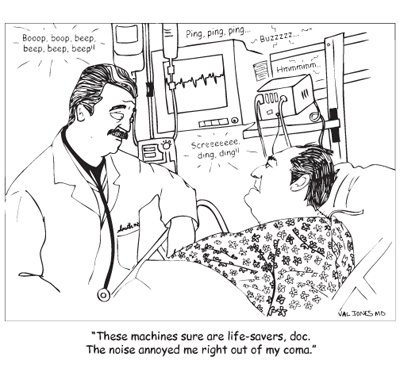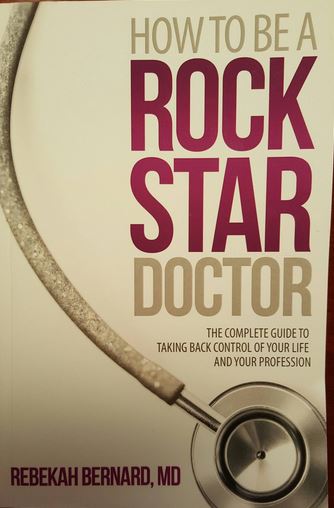October 15th, 2011 by Bryan Vartabedian, M.D. in Opinion
1 Comment »

I woke up this morning, tapped my digital signal, and found this from Brian McGowan on Twitter: “What happens when complexity races ahead of the mind’s ability to adapt? When progress outpaces evolution? We need new solutions.”
Like a slow hunch, a version of this idea has been rattling around in my head for some weeks. Specifically: Is there a new kind of human intelligence evolving? Will our ability to work with knowledge in the face of limitless information select for a new kind of thinker in the 21st century? I suspect it will. Thinking and the creation of new ideas will require Read more »
*This blog post was originally published at 33 Charts*
August 28th, 2011 by ChristopherChangMD in Research
No Comments »

 The basic function of the human nose is to warm and humidify the air before it reaches the lungs. Because of the wide variation of human habitats from the polar cold and dry air to the equatorial hot and humid weather, one would expect the nose to accommodate to these climate extremes accordingly through evolutionary pressures.
The basic function of the human nose is to warm and humidify the air before it reaches the lungs. Because of the wide variation of human habitats from the polar cold and dry air to the equatorial hot and humid weather, one would expect the nose to accommodate to these climate extremes accordingly through evolutionary pressures.
In essence, logically one would expect the nose to change shape to enhance time that air is in contact with the warm and moist nasal interior in cold and dry climates compared to the opposite environmental extreme.
German scientists evaluated this hypothesis through Read more »
*This blog post was originally published at Fauquier ENT Blog*
April 26th, 2011 by ChristopherChangMD in Opinion
No Comments »

 I read with interest a blog post by Robert Krulwich of NPR fame on why there is so much public resistance to accept changes in truth with new scientific discoveries (some of which was new to even me)…
I read with interest a blog post by Robert Krulwich of NPR fame on why there is so much public resistance to accept changes in truth with new scientific discoveries (some of which was new to even me)…
1) Triceratops with their beautifully placed 3 horns is actually the teenage dinosaur version of the adult Torosaurus (who had ugly asymmetric horns). Now… a decision had to be made regarding which name to stick with. Ultimately, “Triceratops” won out, perhaps because of the “Save the Triceratops” Facebook page???
2) The same unfortunately is not true for the Brontosaurus. It was clear that Apatosaurus is the same dinosaur and as such, the “Brontosaurus” name is no more much to the dismay of many lay public… Read more »
*This blog post was originally published at Fauquier ENT Blog*
April 22nd, 2010 by Berci in Better Health Network, Research
No Comments »

I recently come across Scitable, a Nature Education initiative, that aims to bring together a library of scientific overviews with a worldwide community of scientists, researchers, teachers and students. From Scitable:
[Scitable is] a free science library and personal learning tool brought to you by Nature Publishing Group, the world’s leading publisher of science. Scitable currently concentrates on genetics, the study of evolution, variation, and the rich complexity of living organisms.
*This blog post was originally published at ScienceRoll*
February 25th, 2010 by Medgadget in Better Health Network, News, Research
No Comments »

 From RIKEN Research:
From RIKEN Research:
Scientists from RIKEN Brain Science Institute in Wako, Japan and the Institute of Neurology at University College London have discovered that the brains of macaque monkeys undergo significant development when they are taught how to use tools. This finding may imply that our advanced human brains got as big and powerful as they did thanks to using tools, rather than the other way around.
The researchers used a technique called voxel-based morphometry (VBM) to classify areas of brain tissue in their MRI images as grey matter, white matter, or cerebro-spinal fluid, and to compare the volume of each tissue at different stages of learning. Read more »
*This blog post was originally published at Medgadget*




 The basic function of the human nose is to warm and humidify the air before it reaches the lungs. Because of the wide variation of human habitats from the polar cold and dry air to the equatorial hot and humid weather, one would expect the nose to accommodate to these climate extremes accordingly through evolutionary pressures.
The basic function of the human nose is to warm and humidify the air before it reaches the lungs. Because of the wide variation of human habitats from the polar cold and dry air to the equatorial hot and humid weather, one would expect the nose to accommodate to these climate extremes accordingly through evolutionary pressures.


 From RIKEN Research:
From RIKEN Research:







